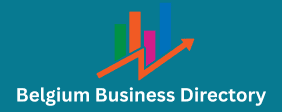To organize successful virtual events, choosing the right tools and platforms is crucial. These should offer features that facilitate interaction and engagement, while providing a seamless experience for both organizers and participants. Below are some of the best options available on the market.
Zoom
Zoom has established itself as one of the most popular platforms for virtual events, thanks to its ease of use and versatility. It offers features such as webinars, video meetings, chat, and the ability to create breakout rooms. Its compatibility with multiple devices and operating systems makes it an accessible option for all types of users.
Microsoft Teams
Microsoft Teams is ideal for businesses already using the denmark email list 2 million contact leads Microsoft ecosystem. It offers integration with other applications such as Outlook and SharePoint, facilitating document management and real-time collaboration. It also allows for the organization of online events with features such as video calling, chat, and collaborative workspaces.
Facebook Live and Instagram Live
Live broadcasts on social media platforms like Facebook and Instagram are excellent for reaching a wide and diverse audience. These platforms allow for real-time effective strategies for local business participation in community groups interaction through comments and reactions, which is perfect for events seeking high participation and visibility. Plus, videos can be saved and shared later, further expanding their reach.
Hopin
Hopin is a platform specializing in virtual events that offers a complete and personalized experience. It allows for the creation of virtual stages, breakout sessions, networking areas, and exhibition stands. This tool is especially useful for conferences, trade shows, and large-scale events that require multiple interaction areas.
Google Meet
Google Meet is an excellent option for virtual events, especially for those looking for simplicity and efficiency. Integrated with Google Workspace, it allows for usa b2b list scheduling meetings through Google Calendar and real-time document collaboration with Google Drive. It’s ideal for workshops and medium-sized meetings.
When selecting the right platform, it’s important to consider factors such as the size of the event, the desired level of interaction, and the specific needs of your community. Be sure to test out the tools in advance to familiarize yourself with their features and ensure a seamless experience for all participants.

